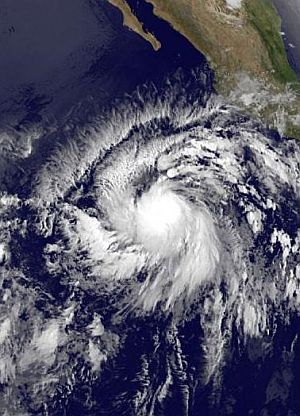Mexico City - Mexico weathered a record eastern Pacific hurricane season with almost no deaths and relatively little damage, given the intensity of this year's storms.
The U.S. National Oceanic and Atmospheric Administration released its 2015 hurricane season report Tuesday, saying that "this is the first year since reliable record keeping began in 1971 that the eastern Pacific saw nine major hurricanes," which are defined as Category 3 or higher with winds of at least 111 mph (178 kph).
 |
Mexicans have wondered why the country escaped any major disaster, and President Enrique Peņa Nieto attributed the lack of damage to prayer circles and "the faith of the Mexican people."
But Dr. Gerry Bell, the lead seasonal hurricane forecaster at NOAA's Climate Prediction Center, said Tuesday the same thing that made Pacific hurricanes stronger - the El Niņo weather phenomenon - may have also made them less deadly. El Niņo is an ocean-warming phenomenon seen once every few years that can change weather patterns globally.
"El Niņo made both the central and eastern Pacific hurricane seasons more intense," Bell wrote. "El Niņo also caused the storms in the eastern Pacific to form farther west from the west coast of Mexico, and to also track more westward. As a result most of those storms remained over the open ocean throughout their life."
Bell attributed the lack of deaths from Patricia "to excellent responses from emergency managers and citizens before the storm struck."
The Atlantic hurricane season was below normal, with 11 named storms. The 2015 hurricane season ended Monday, and there is no telling what next year may be like.
Bell wrote that "sometimes El Niņo is a multi-year phenomenon, but we cannot currently tell whether this one will be." He said computer models for now are pointing to the current El Niņo dissipating late next spring.
Original article


